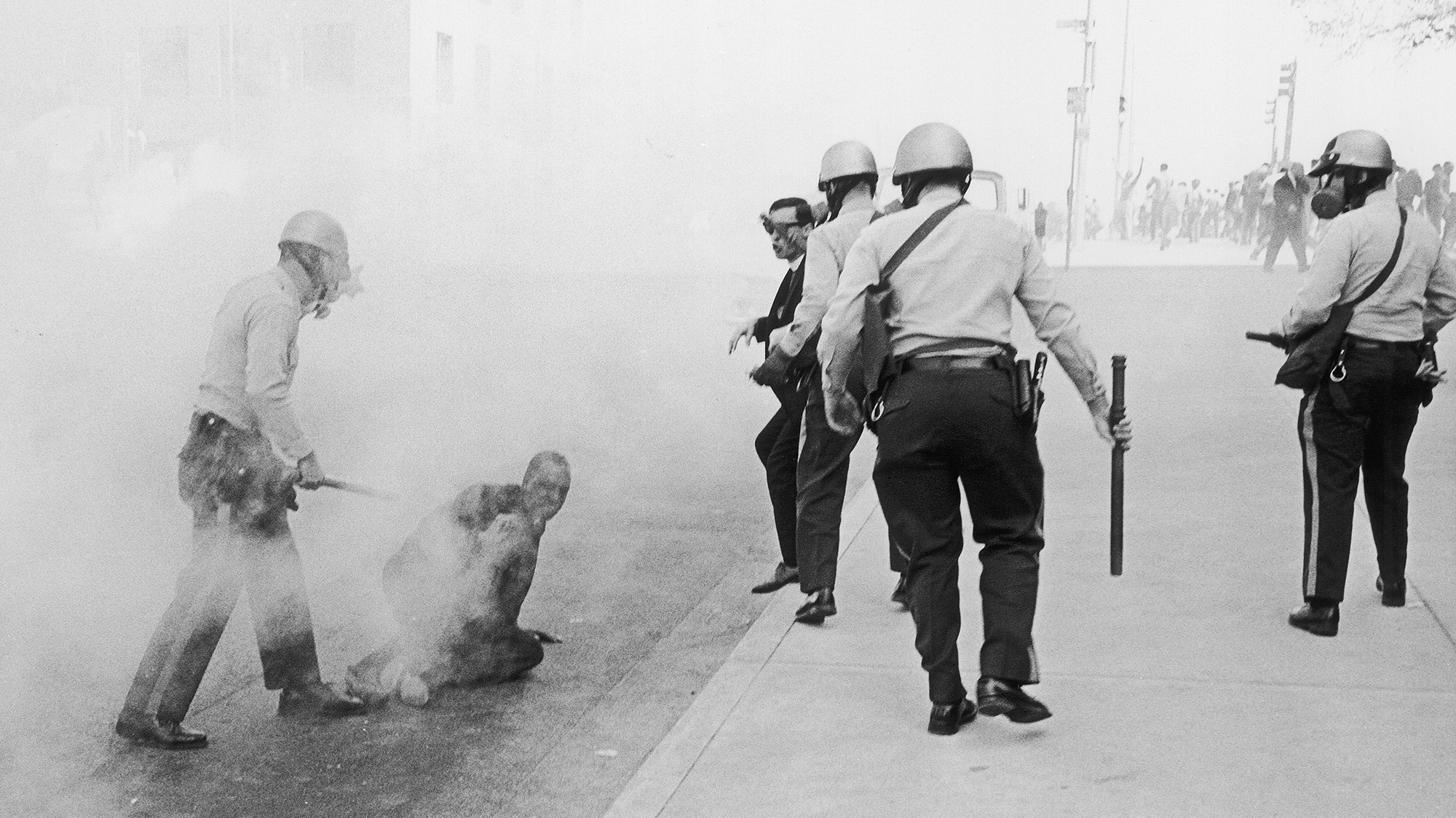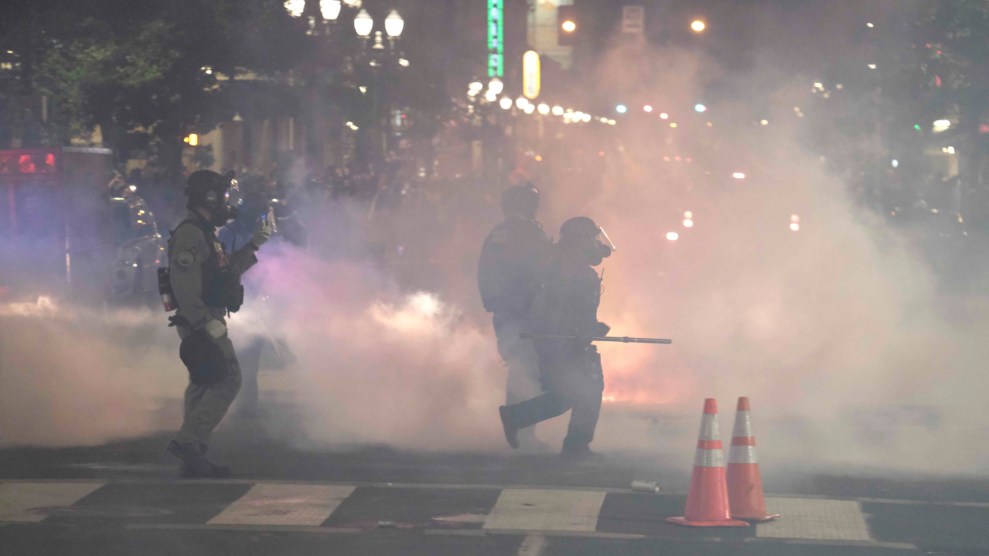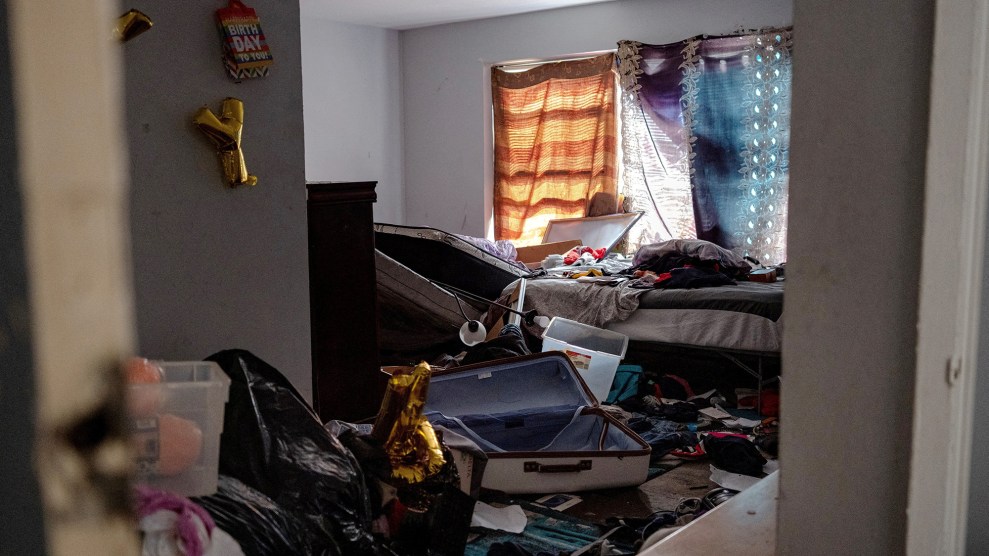This article was adapted from Tear Gas: From the Battlefields of World War I to the Streets of Today (Verso 2017).
The duty of a “true American” is the “protection of our country against any foreign dangers whatsoever, whether it is from aliens outside, or not.” This was General Amos Fries 100 years ago, sounding very much like a Donald Trump tweet. As head of the United States Chemical Warfare Service after the first World War, Fries helped transform tear gas from a wartime weapon into the most popular protest policing technology in the world.
After World War I ended, many of the chemical weapons developed for the battlefields got reused and rebranded as peacetime tools. For Fries, war gases were the ultimate American technology. They were a sign of the troops’ perseverance in World War I and an emblem of industrial modernity, showcasing the intersection of science and war. In an Armistice Day radio speech broadcast in 1924, Fries said, “The extent to which chemistry is used can almost be said today to be a barometer of the civilization of a country.” Preparations for a new international protocol banning chemical weapons were well under way. If chemical agents were prohibited from warfare, Fries knew it would likely mean the end of the CWS—and with it his blossoming postwar career.
Fries knew he had to act quickly and persuasively. He saw great potential for tear gas in law enforcement and colonial administration. For him tear gas was the ideal technology to keep rich white leaders in power. Fries was “firmly convinced that as soon as officers of the law and colonial administrators have familiarized themselves with gas as a means of maintaining order and power there will be such a diminution of violent social disorders and savage uprising as to amount to their disappearance.”
Throughout the 1920s and 1930s both the CWS and commercial manufacturers peddled their products to police departments, National Guard, prisons, and private security firms—a turning point in what is today called the “militarization of the police.” Advertising in trade publications, radio speeches, and news features, Fries worked with a network of lawyers and publicists to promote tear gas as an easy-to-use and media-friendly solution to protests. The psychological impact of tear gas set it apart from bullets. One feature profile in Gas Trade Record read:
The tear gases appear to be admirably suited to the purpose of isolating the individual from the mob spirit…he is thrown into a condition in which he can think of nothing but relieving his own distress. Under such conditions an army disintegrates and a mob ceases to be; it becomes a blind stampede to get away from the source of torture.
Through sensory torture, tear gas could force people to retreat. This gave it a novelty value in a market where only the billy club and bullets were available. Moreover, officers could disperse a crowd with “a minimum amount of undesirable publicity.” Instead of traces of blood and bruises, tear gas evaporated from the scene, its damage so much less apparent on the surface of the skin or in the lens of the camera.
Haven’t seen anything like this so far #seattleprotest pic.twitter.com/MkdyBG1EZq
— Chase Burns (@chaseburnsy) June 8, 2020
According to Fries, this new technology, in the hands of a white man, could quell any uprising. In a lecture at the General Staff College in Washington, DC, Fries told young soldiers, “The same training that makes for advancement in science, and success in manufacture in peace, gives the control of the body that holds the white man to the firing line no matter what its terrors. A great deal of this comes because the white man has had trained out of him nearly all superstition.” It is this training, for Fries, that sets the white man apart from the “negro” as well as the “Gurkha and the Moroccan.”
In 1935, Fries testified to Congress, “There is no room in this country for any ‘ism,’ or any word ending in those letters, except ‘Americanism.’” Perhaps not surprisingly, tucked among Fries’ personal files held at the University of Oregon, there is a membership form for the Ku Klux Klan. Although in this archive the form is blank, it is accompanied by a personalized membership solicitation letter praising Fries’ initiative to ban the teaching of communism in public schools. The letter, typed on “Women of the Ku Klux Klan” stationery, pledges “to support Major Fries and his committee to the fullest extent.”
Echoing the rhetoric we see from Trump today, Fries’ dangerously myopic visions of “good” and “bad” Americans legitimated the deployment of chemical weapons to crush popular uprisings. However, it was not only in the United States that tear gas was making its name as a way for white colonizers and economic elites to keep control in their occupied lands. South Africa and France were actively using tear gas to suppress their populations, with the British following close behind. The rise of passive resistance in India, the engagement of women and children in protest in Nigeria, and local tensions around religion, ethnicity, and colonial rule in Palestine made policing the British colonies a challenge. The British needed to maintain the social order and keep the profitable economic operations of their colonial territories functioning.
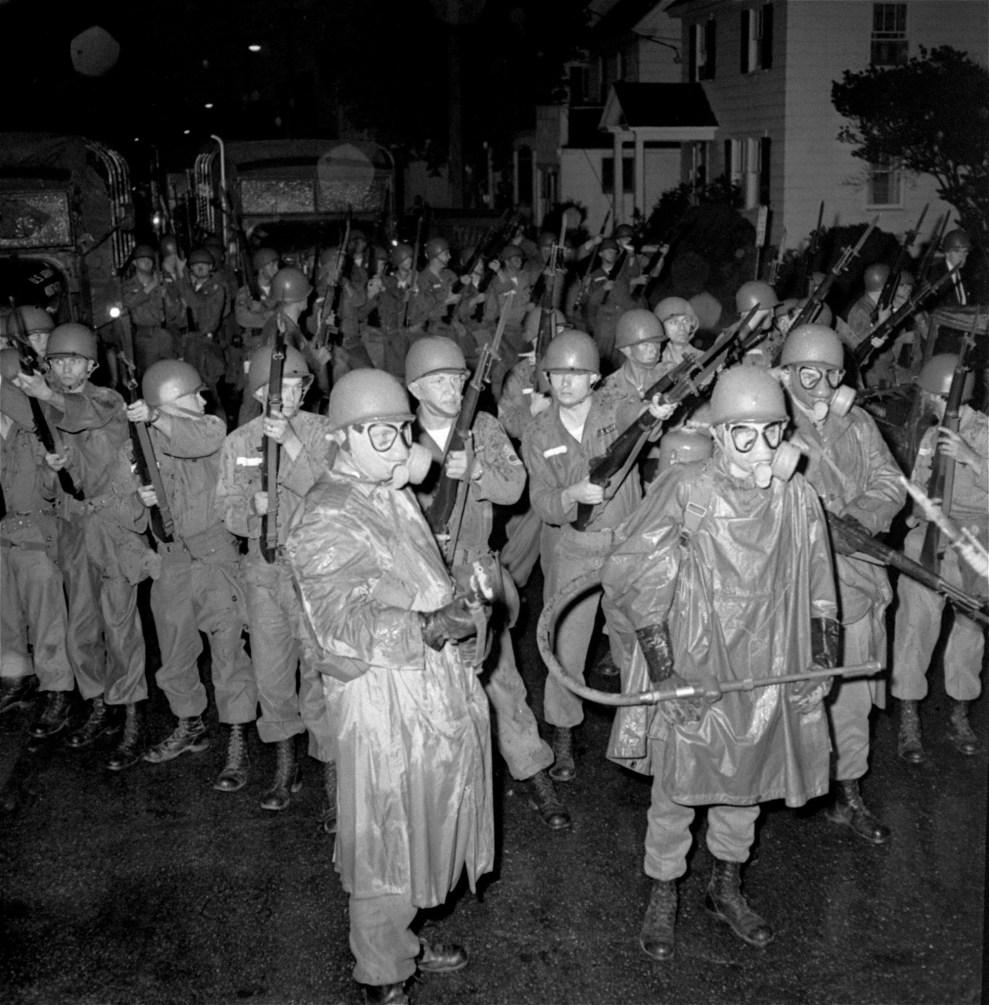
Associated Press
By the start of the 1930s, British officials were coming around to the idea of tear gas. J. E. W. Hood noted to his colleagues in the colonial administration that the latest War Office memo made a very clear and convincing case for the use of tear gas. “I must say that I should prefer to use tear gas on a mob rather than shoot at them,” Hood wrote. “Tear gas does no harm but makes the mob look silly.” Hood noted that tear gas was used in the United States and South Africa without “a howl of protest,” reasoning that “if you may use gas on a Hottentot why not on an Ibo.” Hood’s remarks reflected the view that saw native populations as inferior to white settlers, a population to be managed by the civilizing force of the West.
Over and over again, throughout the 1930s, colonial officials perpetuated the marketing myth that tear gas was harmless, ephemeral, and incapable of causing lasting injury, a project that would gain scientific cover as the century wore on. Likewise, while international treaties banning chemical weapons in wartime were deemed worthy of debate, there was no discussion in these colonial documents of police officers’ possible abuse or excessive use of tear gas. Instead, like a mantra, the British government maintained that tear gas could absolve colonial authorities from blame and turn the repression of civil dissent into a propaganda piece showcasing the empire’s benevolence.
Eventually the British Home Office was persuaded and decided to permit the use of tear gas for colonial rule. By the end of the 1930s, tear gas was considered the humane weapon of choice. The cautious rhetoric that first suggested it only be used in extreme cases when firearms were about to be drawn no longer applied. Instead, colonial officers were advised to fire gas early, to use it in large amounts, and to protect the police by keeping distance and donning gas masks.
During this period, tear gas became intimately bound up with the state’s ability to refuse to respond to demands for change. Its dual function as a physical (dispersing) and psychological (demoralizing) force meant that a certain amount of civil resistance to new rules and regulations could be easily contained. Further, because these weapons could now be legally used against peaceful or passively resistant demonstrators to make them “look silly,” authorities were no longer as threatened by new nonviolent forms of collective action. Tear gas became a go-to tool—not only for suppressing the masses but for calculatedly undermining acts of civil disobedience.
In the United States, the response to the civil rights movement demonstrated the impunity enjoyed by officers using tear gas. While on occasion tear gas would be deployed on its own to break up a demonstration, more often than not it served a much more violent function. It tore people from their sit-ins and locked-arm blockades. It pulled them out from behind barriers and inside protest tents. It emptied meeting halls and occupied offices, followed by a rush of baton beatings and at times whips, jabs from bayonets, and even live ammunition. Tear gas also served a psychological function. In escalating the violence of the scene and arousing derision from onlookers, tear gas implicated protesters, and often bystanders, in a violent and chaotic scene. It turned civilians into criminals.
“It’s the screams I remember the most,” Joanne Bland remembered, drawing on her childhood memories of being at the bridge during the “Bloody Sunday” Selma-to-Montgomery march in 1965. “All you could do is scream, and they were beating you.” Only 11 at the time, Joanne was one of many children trampled and chased that day by the Alabama troopers, led by segregationist Sheriff James Clark. That day at the bridge, more than 50 state troopers wearing steel helmets emblazoned with the Confederate flag were accompanied by three dozen khaki-clad white men armed with whips and clubs who served as part of Sheriff James Clark’s “posse.”
“Blood was everywhere on the bridge,” Joanne remembered. “People were laying on the street as if they were dead and we couldn’t even stop to see if they were alright.” Over the course of about 30 minutes, the troopers shot 40 canisters of C-4 tear gas, 12 canisters of smoke, and eight canisters of nausea gas. The marchers began crying, screaming, and vomiting. The gas attack provided a smokescreen for escalated police violence. The trial transcript from the inquiry into the police violence at Selma, running north of 1,000 pages, is filled with testimonies of troopers using tear gas as an offensive weapon, purposely aiming at peaceful demonstrators. It reveals how tear gas was also used as a punitive device, attacking those who helped protesters in their homes.
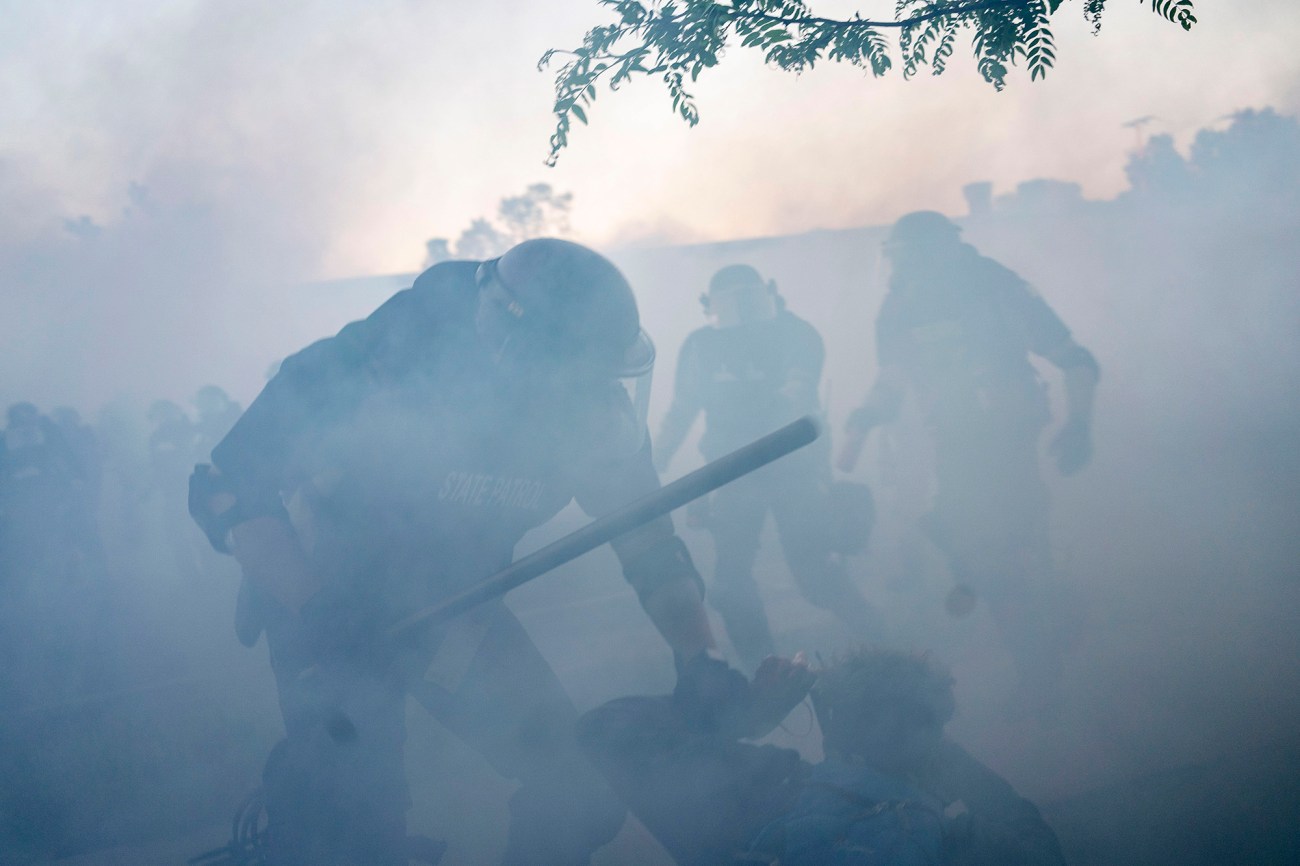
Sait Serkan Gurbuz/ZUMA Wire
This was the history called up by Donald Trump’s May 29 tweet in which he echoed the words of segregationist leaders and declared “when the looting starts, the shooting starts.” Twitter flagged the post as “glorifying violence.” Soon Trump was threatening to bring in the military. He called governors weak for failing to use law enforcement more aggressively, telling them “you have to dominate.”
Thus reinforced in their terrifying sense of impunity, officers “lit up” protests. They fired into groups of people without any concern for protocol or safety, shooting tear gas at enclosed crowds and on residential streets. They pepper-sprayed people at full force in the face, targeted journalists, destroyed medic tents, beat people bloody, and shot rubber-coated bullets that maimed protesters. Tear gas provided the toxic smoke screen: poison clouds dispersed in the name of white supremacy. As monuments of this history are torn down, these clouds remind us that some of racism’s tools were designed to be impermanent—to leave no trace but the people unable to breathe.
Anna Feigenbaum is author of the book Tear Gas (Verso 2017), from which this essay was adapted, and a co-author of the book Protest Camps (Zed 2013). Her work has appeared in Vice, the Atlantic, the Guardian, Open Democracy, New Internationalist, and Waging Nonviolence, among other outlets. She is an associate professor in the Department of Communication & Journalism at Bournemouth University in the UK. Follow her on Twitter: @drfigtree.

